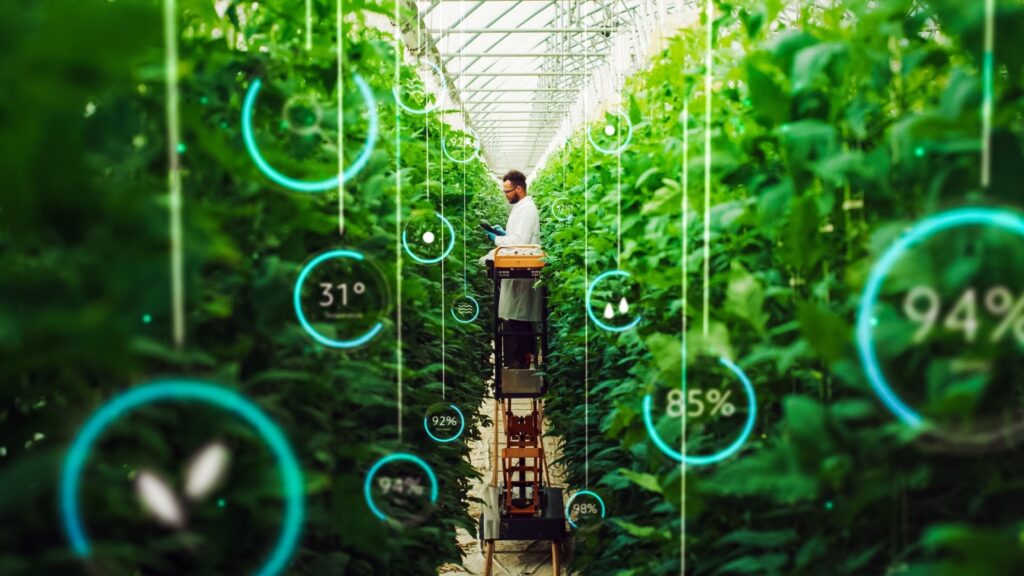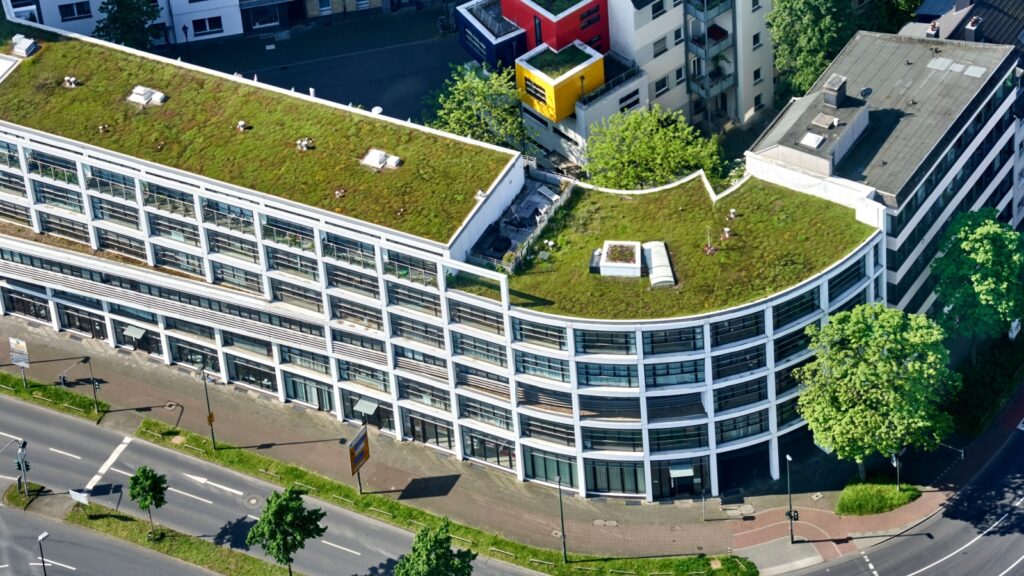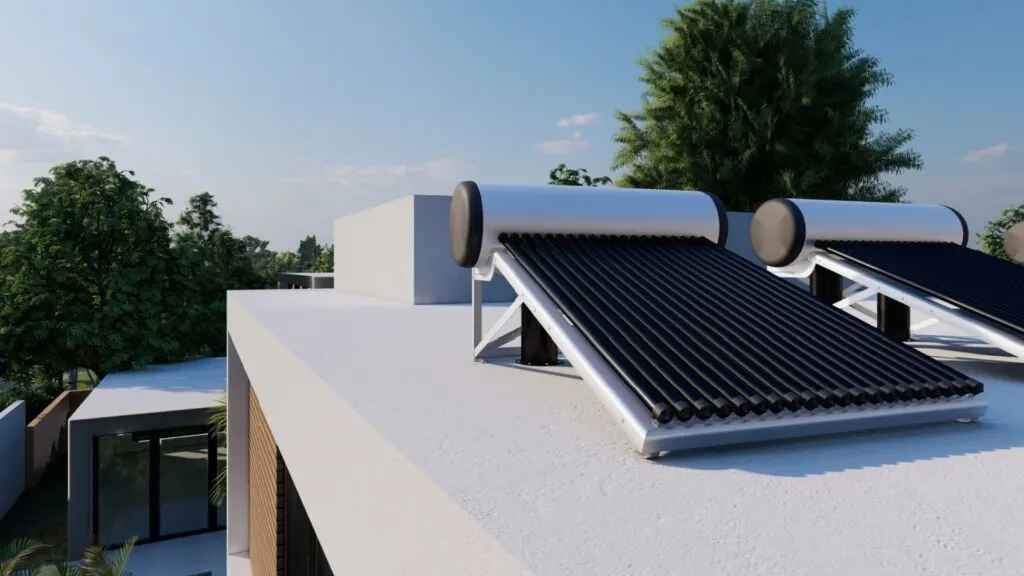As environmental concerns grow, sustainable technology is crucial in promoting eco-friendly living. From renewable energy solutions to smart home devices, innovative tech is helping us reduce our carbon footprint and live more sustainably. These are cutting-edge technologies that are contributing to a greener planet. Look ant these innovative eco-friendly solutions that can help you lead a more sustainable lifestyle while embracing the benefits of modern technology.
Solar-Powered Home Systems

Solar-powered home systems are revolutionizing the way we consume energy. By harnessing the power of the sun, these systems provide a clean and renewable energy source that can power everything from lights to appliances. This not only reduces electricity bills but also significantly cuts down on greenhouse gas emissions.
These systems are becoming more affordable and efficient, making them accessible to a wider audience. Installation is straightforward, and many governments offer incentives to homeowners who adopt solar power. With solar energy, homes can become almost entirely self-sufficient, contributing to a more sustainable future.
Electric Vehicles (EVs)

Electric vehicles are at the forefront of the green transportation revolution. Unlike traditional gas-powered cars, EVs produce zero emissions, making them a cleaner alternative for daily commuting and travel. As battery technology improves, these vehicles are becoming more affordable and capable of longer ranges on a single charge.
Charging infrastructure is expanding rapidly, making it easier than ever to own and operate an EV. Governments worldwide are offering incentives to encourage the adoption of electric cars, helping to reduce our dependence on fossil fuels. By switching to an EV, individuals can significantly reduce their carbon footprint and contribute to cleaner air.
Smart Thermostats

Smart thermostats are intelligent devices that optimize heating and cooling in homes. They learn your schedule and adjust temperatures accordingly, ensuring comfort while minimizing energy waste. This can lead to significant savings on energy bills and a reduction in overall energy consumption.
These devices can be controlled remotely via smartphones, allowing users to make adjustments on the go. Many smart thermostats also provide insights into energy usage, helping homeowners make informed decisions about their habits. By optimizing energy use, smart thermostats contribute to more efficient and eco-friendly living.
LED Lighting

LED lighting is an energy-efficient alternative to traditional incandescent bulbs. LEDs use a fraction of the energy and last significantly longer, reducing both energy consumption and waste. This makes them an excellent choice for both residential and commercial use.
LED bulbs are available in a variety of colors and styles, making them versatile for different lighting needs. They also produce less heat, which can lower cooling costs in the summer. Switching to LED lighting is a simple yet effective way to reduce your carbon footprint and energy bills.
Home Energy Storage Systems

Home energy storage systems, such as Tesla’s Powerwall, allow homeowners to store excess energy generated from renewable sources like solar panels. This stored energy can be used during peak hours or outages, ensuring a steady power supply. It also helps reduce reliance on the grid and enhances energy security.
These systems are becoming more advanced and cost-effective, making them a viable option for more households. By storing renewable energy, homeowners can maximize their use of clean power and minimize waste. Home energy storage systems are a key component of a sustainable energy strategy.
Water-Saving Technologies

Water-saving technologies, such as low-flow showerheads are designed to reduce water consumption without sacrificing performance. These devices help conserve one of our most precious resources while lowering utility bills. They are easy to install and can make a significant impact on overall water usage.
Smart irrigation systems can adjust watering schedules based on weather conditions, ensuring plants get the right amount of water without waste. As well as low-flow fixtures maintain water pressure while using less water. Adopting water-saving technologies is an effective way to promote sustainability in everyday life.
Wind Energy Solutions

Wind energy solutions, including residential wind turbines, offer a renewable energy source that can complement other systems like solar panels. These turbines convert wind into electricity, providing a sustainable power supply for homes and businesses. They are particularly effective in areas with consistent wind patterns.
Advancements in technology have made wind turbines quieter and more efficient, making them a viable option for residential use. By harnessing wind energy, homeowners can further reduce their reliance on non-renewable energy sources. Wind energy solutions contribute to a diversified and resilient energy portfolio.
Smart Home Devices

Smart home devices, such as automated lighting and smart plugs, help reduce energy consumption by optimizing appliance usage. These devices can be controlled remotely and programmed to operate only when needed, minimizing waste. They offer convenience while promoting energy efficiency.
Smart plugs can turn off appliances that are not in use, preventing energy vampires from consuming power. Automated lighting systems can adjust based on occupancy, ensuring lights are on only when necessary. Smart home devices integrate seamlessly into daily routines, making eco-friendly living easier and more efficient.
Green Building Materials

Green building materials, such as recycled steel and bamboo, are becoming popular in sustainable construction. These materials reduce the environmental impact of building projects by minimizing waste and promoting resource efficiency. They also offer durability and aesthetic appeal.
Recycled steel, for example, uses significantly less energy to produce compared to new steel, while bamboo grows rapidly and can be harvested sustainably. These materials contribute to healthier indoor environments and lower the overall carbon footprint of buildings. Using green building materials is a vital step towards sustainable architecture.
Vertical Farming

Vertical farming is an innovative approach to agriculture that involves growing crops in stacked layers, often indoors. This method uses less land and water than traditional farming, making it more sustainable. It also allows for year-round crop production, regardless of external weather conditions.
By using LED lighting and hydroponic or aeroponic systems, vertical farms can produce a variety of crops with minimal resource input. This reduces the need for transportation and lowers the carbon footprint associated with food production. Vertical farming is a promising solution for sustainable urban agriculture.
Composting Technologies

Composting technologies, including electric composters, make it easier to recycle organic waste into nutrient-rich soil. These devices accelerate the composting process, allowing households to manage food waste more efficiently. Composting reduces landfill waste and provides a valuable resource for gardening and landscaping.
Electric composters can break down organic waste in a matter of hours, producing compost that can be used immediately. This helps divert waste from landfills and reduces methane emissions. Adopting composting technologies is a practical way to promote sustainability and support a circular economy.
Energy-Efficient Appliances

Energy-efficient appliances, such as refrigerators and washing machines, consume less energy while providing the same level of performance. These appliances are designed to meet strict energy standards, reducing electricity bills and environmental impact. They are an essential part of any eco-friendly home.
Modern energy-efficient appliances often come with advanced features, such as smart sensors and programmable settings, that further enhance their efficiency. By choosing these appliances, consumers can reduce their household energy consumption significantly. Investing in energy-efficient appliances is a smart and sustainable choice.
Green Roofs

Green roofs are rooftops covered with vegetation, providing insulation and reducing energy consumption. They help absorb rainwater, reduce the heat island effect in urban areas, and provide habitats for wildlife. Green roofs also improve air quality and contribute to a building’s aesthetic appeal.
These roofs can be installed on various types of buildings, from residential homes to commercial properties. They offer a natural way to manage stormwater and reduce heating and cooling costs. Green roofs are an innovative solution for enhancing urban sustainability and promoting biodiversity.
Electric Bikes And Scooters

Electric bikes and scooters are eco-friendly alternatives to traditional gasoline-powered vehicles for short-distance travel. They produce zero emissions and can help reduce traffic congestion in urban areas. These vehicles are convenient, cost-effective, and promote a healthier lifestyle.
With the increasing availability of bike-sharing programs, electric bikes and scooters are becoming more accessible. They offer a sustainable mode of transportation that can be integrated into daily commutes. By choosing electric bikes and scooters, individuals can contribute to cleaner air and reduced carbon emissions.
Biodegradable Products

Biodegradable products, such as packaging and utensils made from plant-based materials, offer an eco-friendly alternative to traditional plastics. These products break down naturally, reducing the amount of waste in landfills and oceans. They are an important part of the effort to combat plastic pollution.
Many biodegradable products are now available, including bags, containers, and cutlery, making it easy for consumers to make sustainable choices. These products are often just as durable and functional as their plastic counterparts. Switching to biodegradable products helps protect the environment and supports a circular economy.
Sustainable Fashion

Sustainable fashion focuses on producing clothing in ways that minimize environmental impact. This includes using eco-friendly materials, such as organic cotton and recycled fabrics, and implementing ethical labor practices. Sustainable fashion promotes a more responsible approach to consumption.
Brands that prioritize sustainability often use innovative methods to reduce waste, such as zero-waste patterns and upcycling. By choosing sustainable fashion, consumers can support environmentally friendly practices and reduce their carbon footprint. Sustainable fashion is a key part of the broader movement towards eco-conscious living.
Rainwater Harvesting Systems

Rainwater harvesting systems collect and store rainwater for later use, reducing the demand for municipal water supplies. This water can be used for irrigation, flushing toilets, and other non-potable purposes. Harvesting rainwater is an effective way to conserve water and promote sustainability.
These systems are relatively easy to install and can significantly reduce water bills. By capturing rainwater, homeowners can make better use of natural resources and reduce their environmental impact. Rainwater harvesting is a practical solution for water conservation and sustainable living.
Smart Irrigation Systems

Smart irrigation systems use sensors and weather data to optimize watering schedules, ensuring plants receive the right amount of water. This reduces water waste and promotes healthier plant growth. Smart irrigation systems are ideal for both residential gardens and commercial landscapes.
These systems can be controlled remotely, allowing users to adjust settings based on real-time conditions. By using water more efficiently, smart irrigation systems help conserve this vital resource. They represent a smart and sustainable approach to landscape management.
Solar Water Heaters

Solar water heaters use sunlight to heat water, providing a renewable and cost-effective solution for household hot water needs. These systems reduce reliance on traditional water heaters, which often use fossil fuels. Solar water heaters are efficient, environmentally friendly, and can significantly lower energy bills.
They are particularly effective in sunny regions, but advancements in technology have made them viable in a variety of climates. By using solar energy to heat water, households can reduce their carbon footprint and promote sustainability. Solar water heaters are a practical addition to any eco-friendly home.
Recycled And Upcycled Furniture

Recycled and upcycled furniture gives new life to old materials, reducing waste and promoting resource efficiency. This furniture is often unique and stylish, offering an eco-friendly alternative to mass-produced items. Recycled furniture can be made from a variety of materials, including wood, metal, and plastic.
Upcycling involves creatively repurposing items to extend their lifecycle, reducing the demand for new resources. By choosing recycled and upcycled furniture, consumers can support sustainable practices and reduce their environmental impact. This approach to furniture design emphasizes creativity and sustainability.
